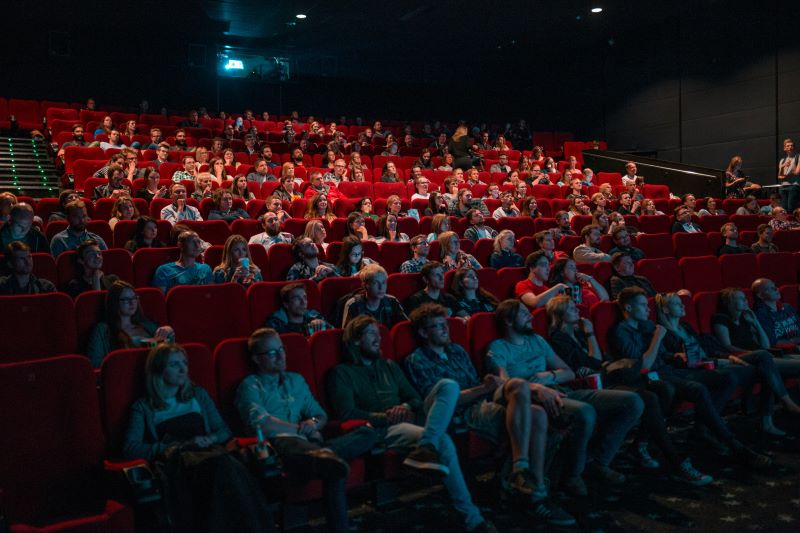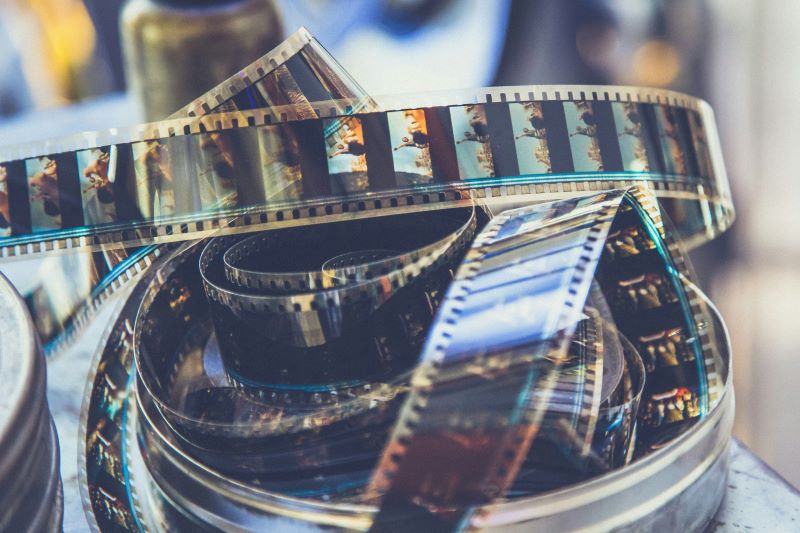Modern technologies allow us to rescue old works of cinematography. Titles that were in danger of being lost due to deteriorating media carriers are today moving from analogue to digital versions. The question remains, should the works only be reconstructed or should some additional elements be improved on the occasion? How do the creators of the originals view this?
Contact
Prof. Jerzy Łukaszewicz from the Institute of Film and Theatre Arts of the University of Silesia – jerzy.lukaszewicz@us.edu.pl
| Maria Sztuka |
The Polish National Film Archive boasts one of the largest collections of films in Europe. It contains 2,000 Polish feature films (from 1908 to the present day), 160 pre-war films, 100,000 documentaries and short films, and over 2,000 animated films. Most were recorded on film stock, a perishable and degradable material. The only way to prevent the loss of film heritage and to preserve it for posterity is digitisation and comprehensive digital restoration.
Thanks to the technological ‘facelift’, we can enjoy such prewar productions as: Ada! Don’t do that! (1936) directed by Konrad Tom and Jadzia (1936) directed by Mieczysław Krawicz. Not only can the contemporary viewer admire the cinema that captivated previous generations, but also follow the development of Polish cinematography.
Photo by Krists Luhaers | Unsplash
The collection of 200 films digitised so far (data from 2023) includes works from the second half of the previous century. The catalogue opens, of course, with the first Polish postwar feature film, Forbidden Songs (1947), directed by Leonard Buczkowski. The inclusion of the most important works of the past century does not come as a surprise, contrary to the films made at the beginning of the 21st century, such as The Revenge directed by Andrzej Wajda (2002) or My Nikifor directed by Krzysztof Krauze (2004). The answer why turns out to be quite simple; the secret lies in the quality of film stock available at the time and the limited financial resources at the disposal of film crews. Back in the 1960s, film copies were made on the basis of a duplicate negative. By the end of the 20th century, the crisis forced film-makers to forgo making duplicates, so copies were pressed from the original negative, contributing to its destruction.
From analogue to digital
Prof. Jerzy Łukaszewicz, a renowned cinematographer, will help guide us through the meanders of film digitisation and restoration. He is the director of cinematography for films such as The Issa Valley (dir. Tadeusz Konwicki), Chance Meeting on the Atlantic (dir. Jerzy Kawalerowicz), Axiliad (dir. Witold Leszczyński), both parts of Vabank, Sexmission, Kingsajz (dir. Juliusz Machulski), director, screenwriter, professor at the Krzysztof Kieślowski Film School at the University of Silesia in Katowice, author of more than 40 digital restorations of films by, among others, Andrzej Wajda, Jerzy Kawalerowicz, and Kazimierz Kutz.
The basic task in the restoration process of an analogue work is to digitise the components of image and sound, which are reproduced as a numerical form of colour and density information. These are extremely complex processes. The technological challenges have to be met by teams of specialised computer science experts, and the restoration of the images usually involves, if available, the creators of the specific films or, if they are no longer alive, their camera crew or those who knew the cinematographer well. Understandably, restorations evoke many emotions and raise questions as to whether the aesthetic values of the restored work are the same as in the original, analogue source.
Not so long ago, cinemas and television were dominated by imperfect analogue images, whereas nowadays we have grown accustomed to digital images. The differences are enormous. Analogue images are characterised by, among other things, reduced definition of visual components, i.e. lack of ‘full’ sharpness, ‘vibration’ of static elements, minimal colour scale with a low degree of saturation, and perceptible image structure (the so-called grain). On the other hand, digital recordings have high image definition, full image sharpness, deep blacks, bright whites, high colour saturation, a significant number of details, and a multidimensional colour scale.
‘This habit, routine, and practised perception of the viewer requires the contemporary artwork to be configured with the same attributes’ explains Prof. Jerzy Lukaszewicz. This is the inalienable nature and mentality of today’s message in multimedia presentations. Thus, the spirit of contemporary art is determined by technological change and the consequent implications of perceptual awareness. The digital image dominates mass media, social media, and contemporary film works.
Archiving
The lifespan of filmstrips is limited; they undergo natural degradation, inevitably leading to their complete breakdown. This process cannot be stopped, and the only possible way of salvation is digitisation, i.e. scanning every single frame of the tape, and as one second of a film is made of 25 frames, the work is tedious and extremely expensive. Specialised software picks up all the distortions, defects, blemishes, dirt, scratches, tape sticking points, perforation damage, etc. occurring on scans.
The primary task of restoring analogue film for the purposes of recording in digital formats is to translate the image and sound into digital form.
‘In this process, the analogue film is stripped of its isomorphic structure, which is based on silver salts and natural pigments. These elements are reproduced as a numerical value of the colour and density of the analogue and digital elements, and a unique colour correction of the whole is carried out’, emphasises the cinematographer.
The technology makes it possible to eliminate the camera operator’s ‘slip-ups’, such as a spotlight element making it into the recording. However, this provokes a debate among archivists who believe that since this spotlight has found its way onto the tape, albeit ‘uninvited’, it should remain in its digital form as is.
After digitisation, the footage goes back into the archive.
Interference
The complex process of film restoration consists of, among other things, removing image grain, adjustment of contrast, black and white levels, and colour saturation. Graphic artists retouch stains and remove scratches and other defects in the image.
‘When restoration encroaches on the elusive and hard-to-define aesthetics of a work, the procedure requires care and sensitivity, as well as knowledge not only of film arts but also of the psychology of perception, art history, art conservation, and cultural studies. Although a huge staff of experts is involved in the restoration process, the opinion of an average viewer may be decisive in the final assessment of the work’, points out Prof. Jerzy Łukaszewicz.
The filmmakers have never been unanimous about their restored works.
‘Having watched Issa Valley, the director and scriptwriter Tadeusz Konwicki concluded that his restored film was… shiny clean. Coming from him, this sounded rather sarcastic’, recalls the cinematographer.
Andrzej Wajda believed that an analogue picture loses its biology when it is restored. According to Prof. Jerzy Lukaszewicz, the aesthetic and technical qualities in the digital domain are far from the standards set by analogue images, but he adds that this is the opinion of the generation brought up in the era of analogue images.
Photo by Eric Terrade | Unsplash
Andrzej Wajda’s position was that the filmmaker can intervene in any way he wishes, and therefore make changes and modifications. However, the ‘Digital Restoration and Digitisation of Polish Films…’ project, co-financed by the European Regional Development Fund, contains certain prerogatives and is under the strict control of archivists, who strive for a faithful transfer of the analogue image.
‘One of the most difficult challenges’, recalls the professor, ‘was the reconstruction of Forbidden Songs. It took two years. The heavily degraded negative revealed many deficiencies, some scenes (shot at night, for example) were difficult to restore due to a lack of essential details. They had to be searched for in various archives, including the archives of Polish television, where fragments of the film were shown. The restored image, therefore, did not come directly from the negative but from various media, the parameters of which had to be aligned in such a way as to make the film a seamless whole and so that these modifications were not perceptible to the audience.
In the case of films by deceased filmmakers, the high-calibre cinematographer involved in the restoration can only appeal to their own sensibilities. In such a case, however, there is little doubt that the restored picture is a new piece of art. A ‘poet of the camera’ (as film critics referred to the cinematographer of the Issa Valley and his work) cannot overcome his own aesthetics, imagination, and way of perceiving the world.
‘Tadeusz Konwicki’s comment is very telling; the director did not reject the film in its digital version, on the contrary, he embraced it, but with certain reservations. He believed that those were not so much two different images as two different worlds entirely. He accepted the restoration procedure as a sign of the times, which force us to make certain modifications’, continues Jerzy Łukaszewicz.
In the opinion of the cinematographer, the creator of brilliant images enchanting the audience with colour and light, the digital version adheres to the requirements and likes of the contemporary viewer
‘This is the world we live in. Appealing to old standards and visual rules may be valuable only for a narrow group of specialists and connoisseurs’, states the professor.
To a wider audience, the technology provides the opportunity to appreciate a work of the past, installing it in the ‘here and now’; the film’s age can be gleaned only from the production date, and not necessarily from the image itself. Digitisation and restoration are an unquestionable boon for worldwide cinematography and the only salvation from its annihilation. It would seem that film stock has become a thing of the past, yet many world-class filmmakers are forcing their producers to return to analogue technology.
‘I have worked both in analogue and digital, but deep down I am convinced that analogue, through its imperfections, also had a certain magic, a touch of craftsmanship, something that at times, although imperfect and underdeveloped, was more… human. The limitations of analogue technology, such as the number of retakes, unleashed creativity and imagination; in digital you can do anything. Artistic thinking and creativity seem all but crippled’, concludes Jerzy Łukaszewicz.
Perhaps, then, the twilight of analogue films has not yet arrived. The renaissance of vinyl records has proved that not everything old has to be cast away for good. The largest laboratory, Technicolor in London, has not yet closed its gates.
The article entitled ‘Digitisation and restoration to preserve cinematographic heritage’ was published in the No Limits popular science journal no. 2(8)/2023 of the University of Silesia.







